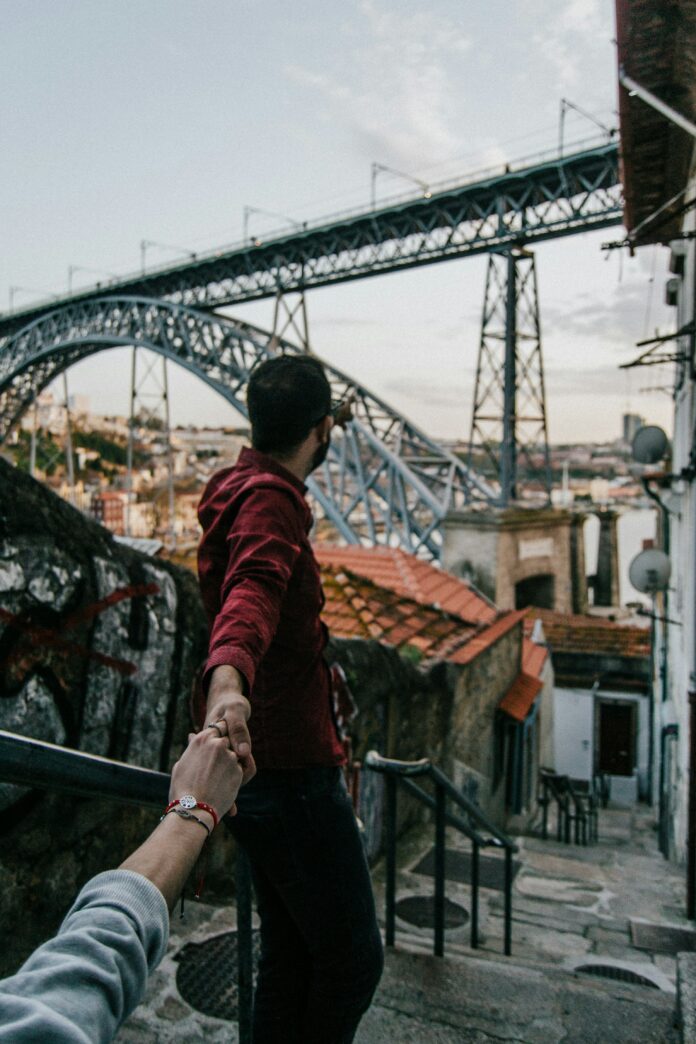Porto – a coastal gem in northwest Portugal – boasts a rich blend of historical sites, architectural marvels, and cultural experiences! No wonder you’re planning to visit it!
However, since we do know how overwhelming it can be to plan your trip – given the numerous tourist attractions in the city – we’ve decided to help! We’ve selected some of the most historically – and culturally-rich locations in Porto and grouped them based on their location so that you could walk from one to the other over a day. We haven’t included too many restaurants and cafes – you’ll find plenty of good ones yourself!
As such, here’s a comprehensive 5-day Porto itinerary to help you make the most of your visit – you can benefit from this guide even if you’re looking for tips on a “2 days in Porto” itinerary.
But first – let’s see how you can arrive in Porto if you’ve landed in Lisbon.
Porto Itinerary: How to Get There from Lisbon
If you’ve landed in Lisbon – which is understandable, considering the beautiful things to see in the area – but also want to enjoy what Porto has to offer, there’s no need to worry about how you’ll get there! There are plenty of options!
First, you can rent a car. This is undoubtedly more convenient and comfortable – this Porto road trip can actually become the highlight of your holiday, as the scenery is absolutely marvelous!
However, if you don’t want to or can’t rent a car, you can easily rely on public transportation. Naturally, you’ll have to accommodate your schedule based on the bus/train schedule, but that’s not such a big problem since several buses go from Lisbon to Porto every day!
If you want to take a bus, check the Rede Expressos website. There are over 20 scheduled trips from Lisbon to Porto throughout the day – choose the one that suits your plans best. The tickets are around 8-15 EUR, and the trip lasts approximately three hours and a half. You can also check Flixbus for even more options. And the best thing about buses? Private bus companies rarely, if ever, go on strike, so you can be assured that you’ll reach your destination!
For trains, check out the Comboios de Portugal website. The train ticket is more expensive, but some of them arrive faster than the bus. Taking a train is also much better if you’re traveling with kids, as any parent likely already knows!
Day 1: Exploring Porto’s Churches
We’ve decided to dedicate the first day of our Porto itinerary to the churches, which are of incredible beauty and undeniably among Porto’s most historically-, culturally-, and spiritually-rich sites. Keep reading to learn more about each and decide if they should be on your must-visit list! You can even include some of these on your Porto 1-day itinerary!
Sé do Porto (Porto Cathedral)
Location: Terreiro da Sé, 4050-573 Porto, Portugal
Hours: Every day: 9 AM – 6:30 PM
Tickets: 3 EUR
Begin your journey at Sé do Porto – a magnificent Romanesque cathedral dating back to the 12th century! Its strategic hilltop location offers sweeping views of Porto and the Douro River. Furthermore, it’s located in the historical center of Porto, so you’ll definitely enjoy the walk to get there!
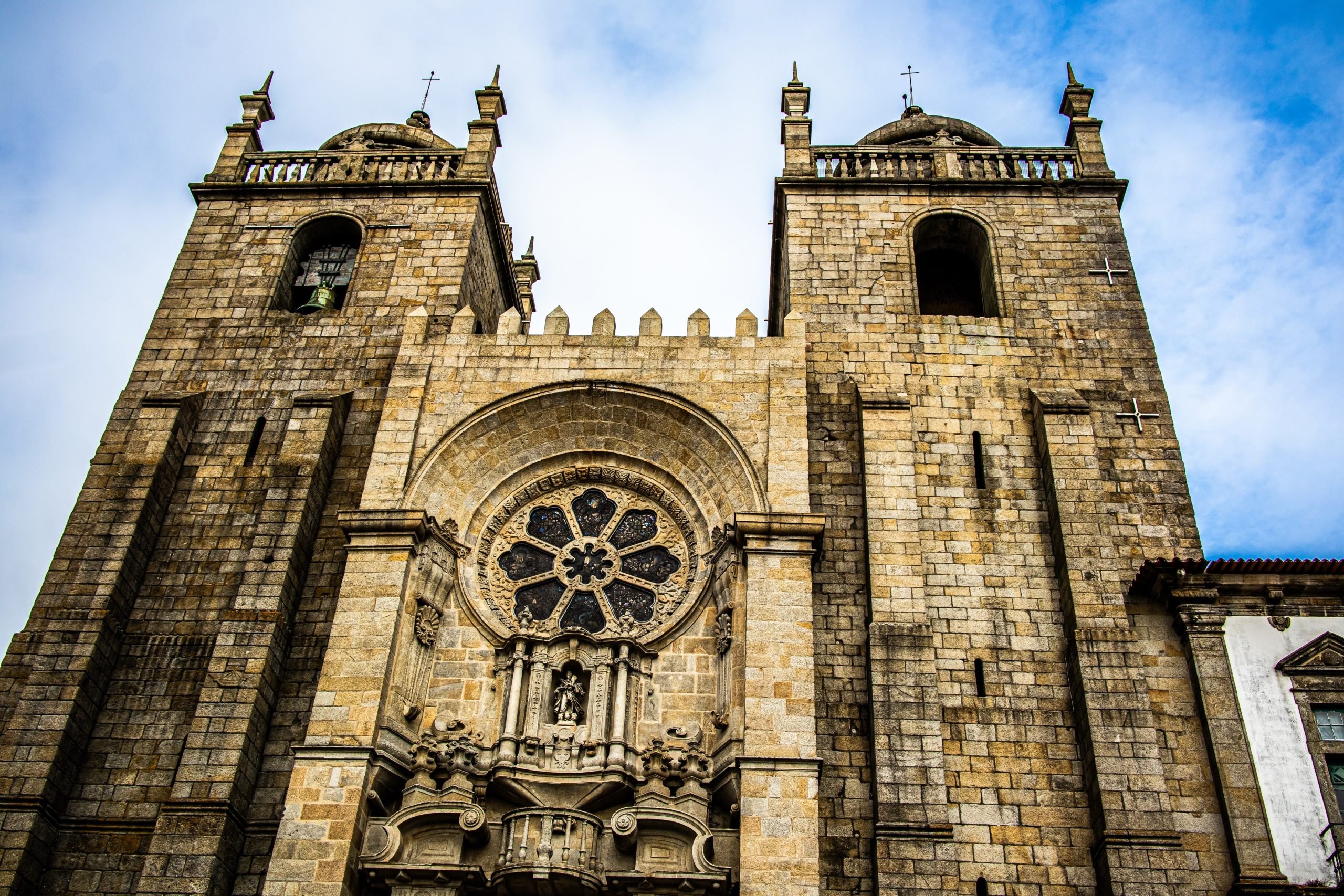
Since the cathedral’s exterior and interior were significantly altered during the Baroque period, the structure now features both Romanesque and Baroque elements. In addition, the Porto Cathedral displays some Gothic structures as well, including the famous Gothic cloister adorned with traditional azulejo tiles depicting religious scenes. The silver altarpiece in the chapel is a notable feature, having been added to the original structure in the second half of the 17th century.
The cathedral’s history is also tied to the formation of the Kingdom of Portugal, as it served as a key religious and military site during the Reconquista.
Igreja de Santa Clara
Location: Av. Avelino Teixeira da Mota, 1950-034 Lisboa, Portugal
Hours: Every day: 9 AM – 1 PM; 2 PM – 6 PM
Tickets: 4 EUR
Next, visit the Igreja de Santa Clara, famous for its opulent Baroque interior. This church is not at the top of many tourists’ must-visit list – and for us that’s a pity! Despite its modest exterior, the church’s interior is a marvel of golden woodwork and intricate carvings.
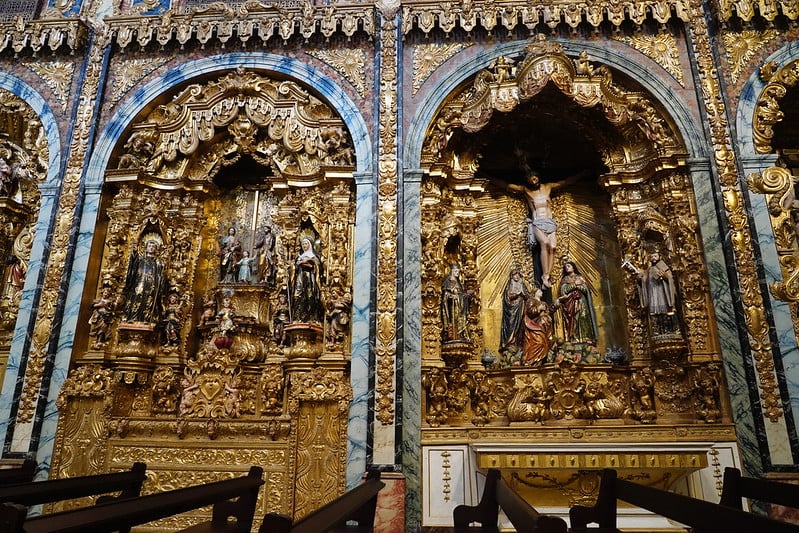
It was built in the 15th century. However, it underwent significant transformations in the 17th century showcasing the artistic and religious fervor of that era. The church is an excellent example of Portuguese gilt woodwork, known as talha dourada, which was widely used in the 17th and 18th centuries. In addition, access to this church is given through a Baroque door built in 1697 and was reconstructed centuries later. It now features Baroque and Renaissance elements.
São Bento Station
The famous São Bento Station! How could we leave this off the list?! A short walk from the Igreja de Santa Clara will bring you to this renowned azulejo-covered station – part transportation hub and part art gallery!
Opened in 1916, the railway station is now a UNESCO World Heritage Site. Without a doubt, people are primarily visiting it for its walls covered in over 20,000 azulejo tiles! You truly have to see it to believe it!
The tiles were designed and painted by Jorge Colaço. They illustrate significant events in Portuguese history, such as the Battle of Arcos de Valdevez and the Conquest of Ceuta, making it a visual narrative of the nation’s past. In other words, you won’t only delight in the one of a kind art but also learn a lot about Portugal’s history.
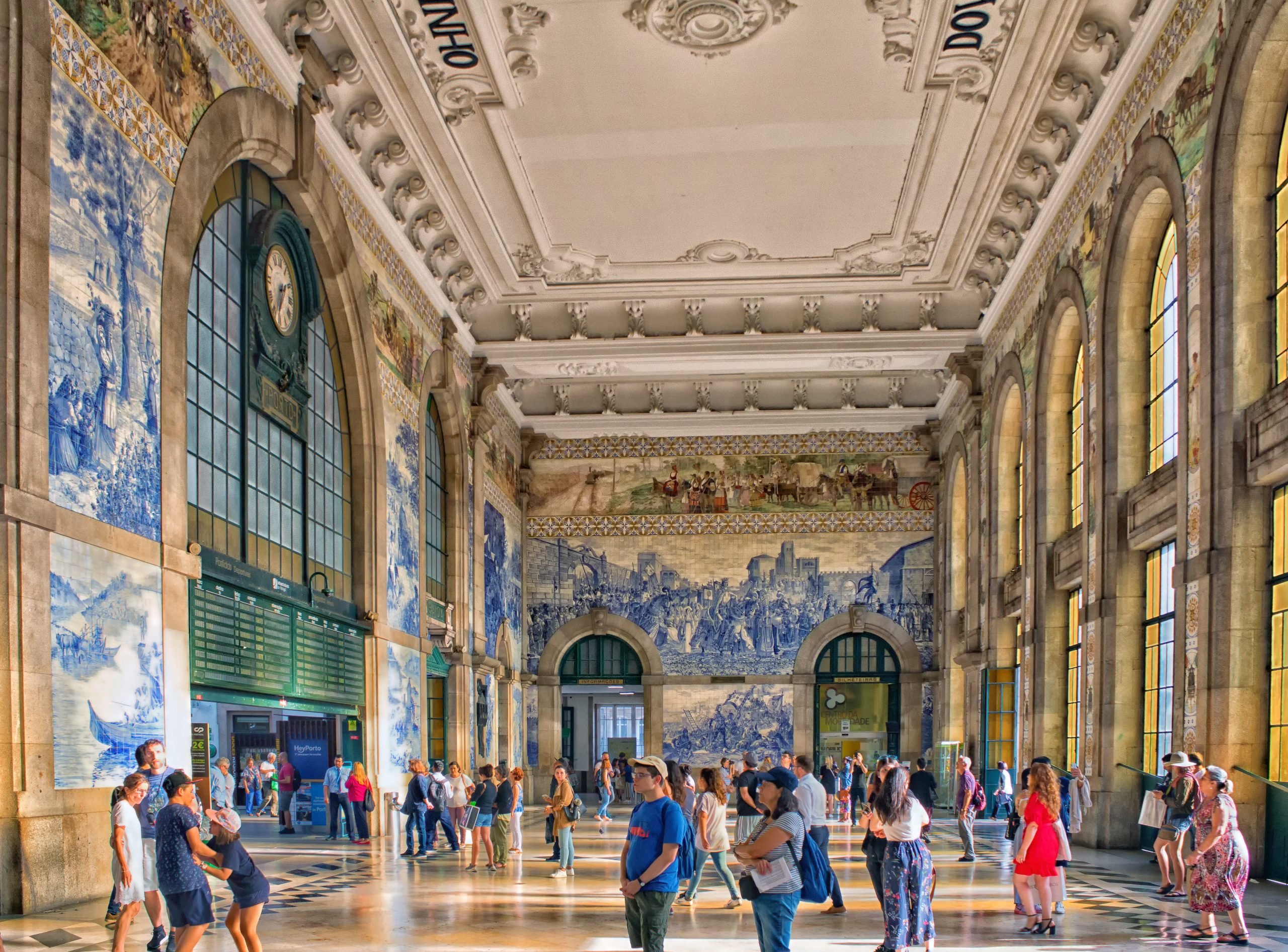
The station itself is built on the site of a former Benedictine monastery ordered by Manuel I of Portugal, adding a layer of historical intrigue. Its exterior doesn’t lack charm either – the building has a Beaux-Arts style with unique architectural elements.
Igreja de Santo Ildefonso
Location: R. de Santo Ildefonso 11, 4000-542 Porto, Portugal
Hours: Varies depending on the day
Tickets: Free
We’ve got two more churches on the list if you’re up to it! Needless to say, you don’t have to visit everything we recommend. First, it can be quite tiring to visit everything, especially if you like to walk around leisurely and enjoy the city. Secondly, not every attraction appeals to everyone, so just go with whatever you prefer! Our job is to share details on why you may like a certain location!
So why do we think you should visit Igreja de Santo Ildefonso? The answer takes us back to Sao Bento station. Why so? If you liked it, you’ll probably like Igreja de Santo Ildefonso as well because it’s also covered in numerous tiles that blend perfectly with the proto-Baroque style!
Built in the 18th century, its Baroque architecture is further complemented by beautiful stained glass windows. The church’s facade, where the 11,000 azulejos are installed, depicts scenes from the life of Saint Ildefonso. The tiles were created by Jorge Colaço, the same artist who worked on the Sao Bento Station tiles.
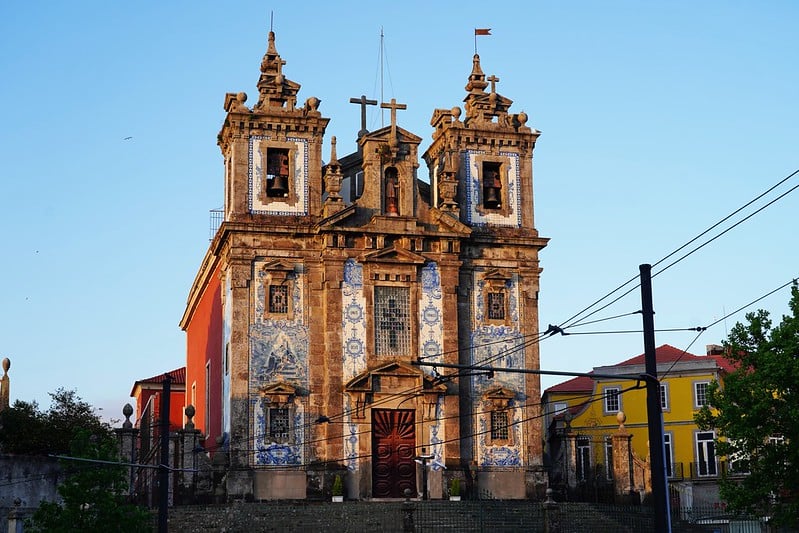
Igreja do Carmo
Location: R. do Carmo, 4050-164 Porto, Portugal
Hours: 9:30 AM – 5 PM
Tickets: 5 EUR
Igreja do Carmo is a fine example of Rococo/Baroque architecture. Constructed in the 18th century, its azulejo-covered exterior illustrates the foundation of the Carmelite order. The adjoining Igreja dos Carmelitas, separated by a narrow house known as the “hidden house” (Casa Escondida), adds to the unique architectural charm.
This structure is said to have been built to prevent any close contact between the nuns of Igreja dos Carmelitas and the monks of Igreja do Carmo.
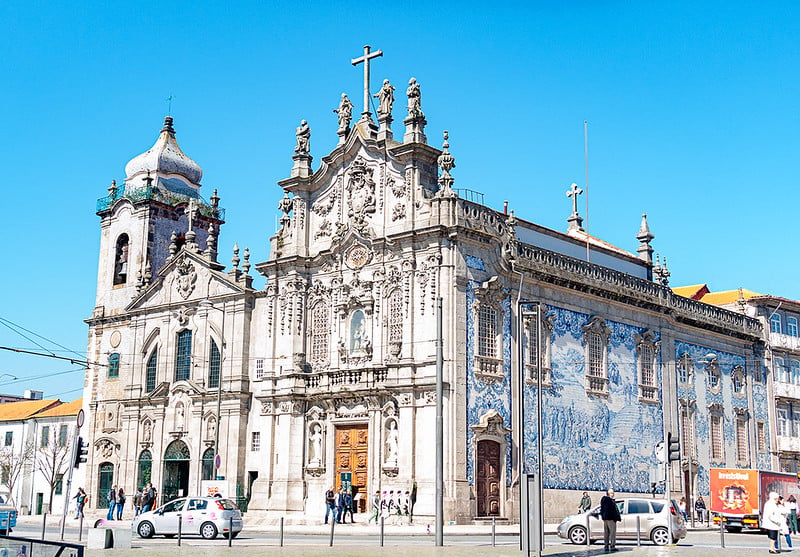
Capela das Almas
Location: R. de Santa Catarina 428, 4000-124 Porto, Portugal
Hours: Monday to Friday – 7:30 AM – 6 PM; Saturday and Sunday: 7:30 AM – 12:30 PM and 6 PM – 7:30 PM
Tickets: Free
The last religious site on our list, we promise – but undoubtedly worth a visit if you can squeeze it into your Porto itinerary!
Capela das Almas is famous for its vivid blue azulejos (over 15,000 tiles) depicting scenes from the lives of saints, including Saint Francis of Assisi and Saint Catherine. The tiles were added in 1929 by Eduardo Leite and cover an impressive 360 square meters, making it one of the most visually stunning sites in Porto!
In other words, visit Capela das Almas and get a full bouquet of Porto churches and azulejo-covered structures!
Day 2: Historic Squares and Iconic Landmarks
The second day of our Porto itinerary focuses on the historic center of the city and the most famous landmarks. Be it that you’re looking for a week-long trip itinerary or just some tips on spending 2 days in Porto, this tour will undoubtedly help you plan your visit. In addition, if you’re looking for things to do in Porto for a day – this route is definitely it!
Here’s what you should check out on day 2 in Porto:
Praça de Gomes Teixeira
Start your day at Praça de Gomes Teixeira, a bustling square surrounded by significant landmarks. The square’s centerpiece is the Fonte dos Leões, a beautiful fountain adorned with four lion sculptures.
In fact, you’ve probably seen it on your first day in Porto, as it’s right beside Igreja do Carmo. But it’s an excellent starting point for today’s tour.
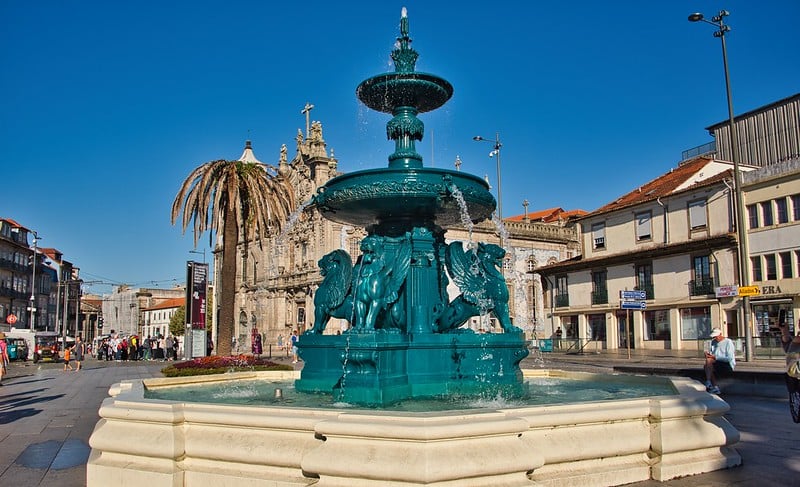
Monumento D. Pedro IV
Location: Praça da Liberdade, 4000-069 Porto, Portugal
Stroll to Monumento Dom Pedro IV, located in the heart of Avenida dos Aliados, only six minutes away by foot. This statue honors the first Emperor of Brazil and is a key figure in both Portuguese and Brazilian history.
Known as Dom Pedro I of Brazil, he was also the king of Portugal, where he was known as Pedro IV. The king played a pivotal role in the independence of Brazil from Portugal. The monument is a symbol of his contributions to the formation of modern Portugal and Brazil.
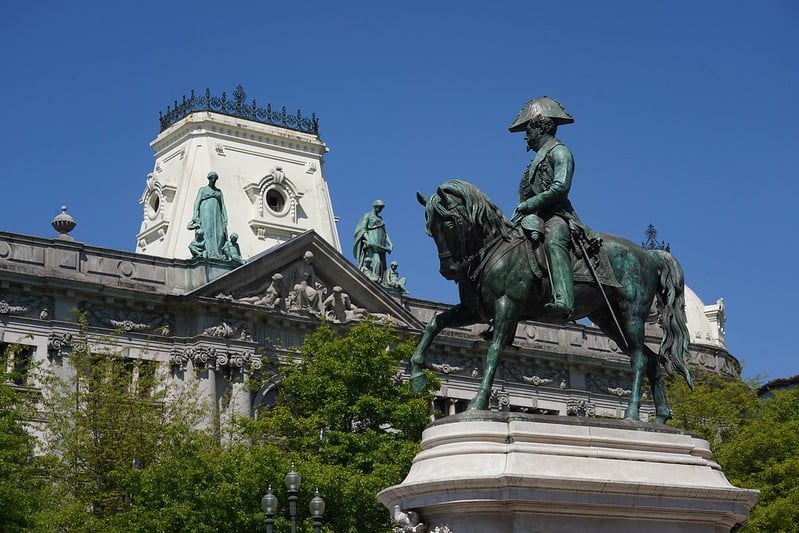
Rua das Flores
You may have passed Rua das Flores on your first day in Porto because it’s close to the São Bento station, but now you can leisurely explore it!
Rua das Flores is a charming pedestrian street with beautifully restored buildings, shops, and cafes. Once upon a time, however, it was a street of noble residences and mansions.
Make sure to check out Livraria Chamine de Mota, Portugal’s largest antiquarian bookstore, Ferragens Fermoura, a shop with wooden toys, household linen, and whatnot, and Floresta Cafe by Hungry Biker.
Igreja e Torre dos Clérigos
Location: R. de São Filipe de Nery, 4050-546 Porto, Portugal
Hours: Every day: 9 AM – 6:30 PM
Tickets: 8 EUR
We know we promised that Capela das Almas would be the last religious site on our itinerary, but how can we skip Igreja e Torre dos Clérigos when it offers such splendid panoramic views over the city?
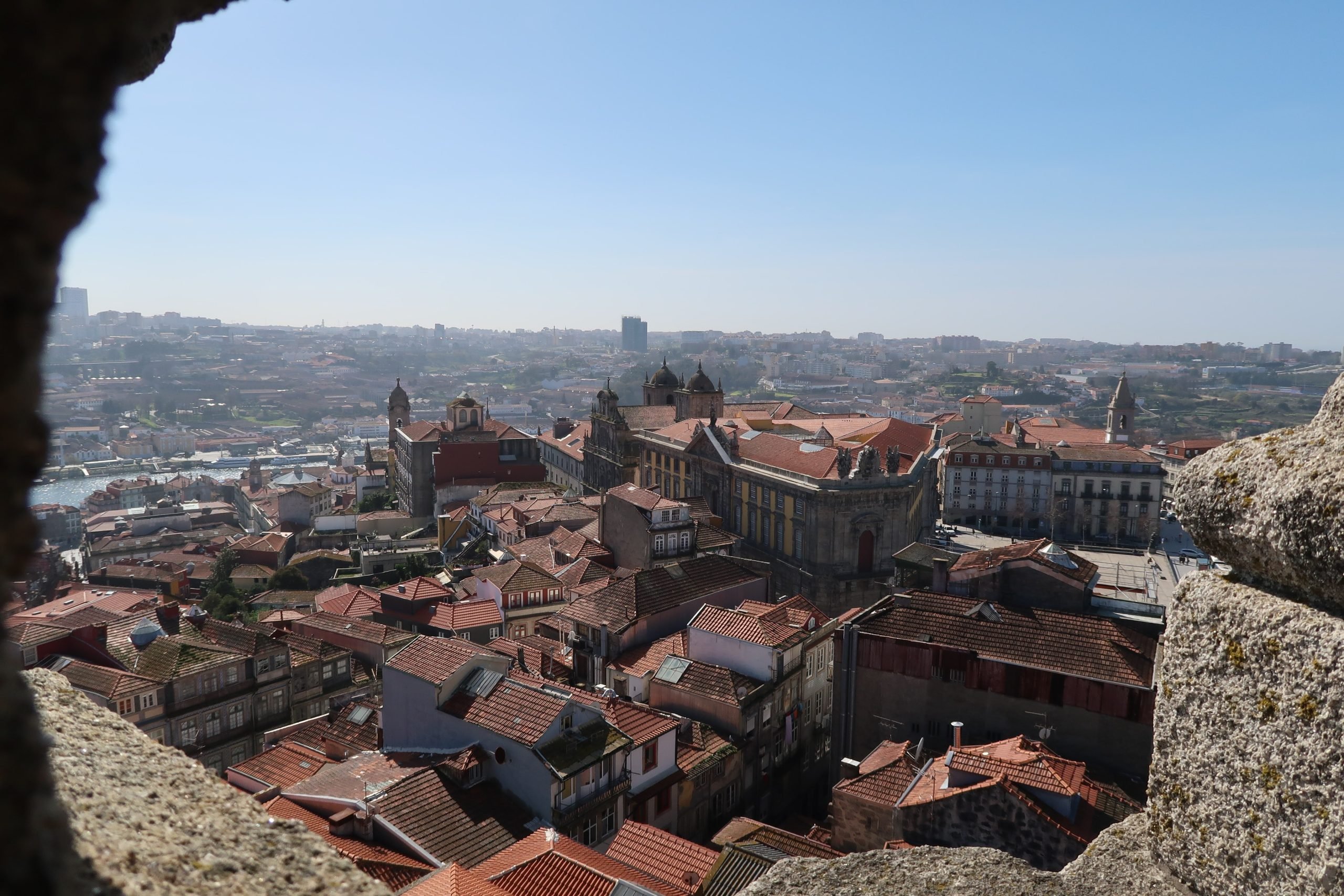
This Baroque church and its 75-meter tall bell tower, designed by Italian architect Nicolau Nasoni, were completed in 1763. The tower is one of the tallest in Portugal – you’ll have to climb 240 steps. But once you’re at the top, you’ll convince yourself that the breathtaking view of Porto is well worth the effort! The church boasts a richly decorated interior with detailed carvings and an impressive altarpiece.
Miradouro da Vitória
Location: R. de São Bento da Vitória 11, 4050-265 Porto, Portugal
Why not end your day at Miradouro da Vitória? It’s an incredible viewpoint offering stunning views over the Ribeira district, Douro River, and Vila Nova de Gaia. This spot is particularly enchanting at sunset – it provides a perfect opportunity to capture the picturesque scenery of Porto!
All in all, make sure you’ve got enough battery on your phone on your second day in Porto because the scenery promises to be magnificent!
Day 3: Vila Nova de Gaia and Port Tasting
And so we’ve made it to the 3rd day! Spoiler alert – if you’re planning a Porto itinerary, three days can be more than enough to visit the best locations in the city. Vila Nova de Gaia can make for a perfect end to your trip if you’re spending just 3 days in Porto. If you’re planning to prolong your trip, keep reading, because we’ve got some other truly incredible places you’ll enjoy!
Vila Nova de Gaia is a municipality in the Porto District located on the other side of the Douro River. If you want to have an authentic experience exploring local cellars – Vila Nova de Gaia is your destination!
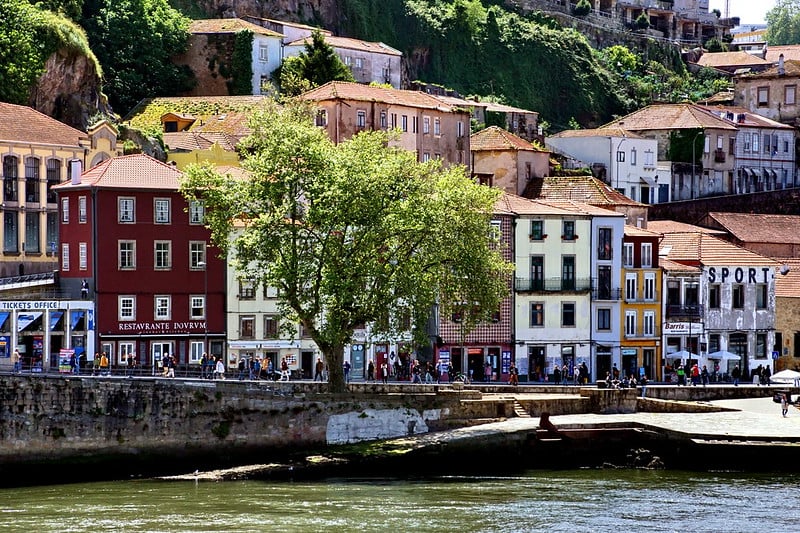
In addition, it has 17 beaches, among which are Miramar, Granja, Valadares, and Madalena. In short, you can pair wine tasting with sunbathing – can you wish for more after two busy days in Porto?
If you’re on the lookout for museums and natural parks, rest assured – you’ll find plenty in Vila Nova de Gaia, including:
- Jardim do Morro
- Local Nature Reserve of the Douro Estuary (spoiler alert: it’s a treasure for wildlife enthusiasts, especially bird-watchers!)
- Gaia Biological Park
- House-Museum Teixeira Lopes
- Solar dos Condes de Resende
Make sure to stop at Miradouro da Ribeira, which offers splendid views over Ponte Luis I. It’s an excellent spot for early morning photography.
We also recommend taking the Gaia Cable Car to Miradouro do Teleférico. This short ride provides a unique perspective of Porto and the river. At the top, you’ll find another fantastic viewpoint offering sweeping views of the cityscape and the bustling riverbanks below!
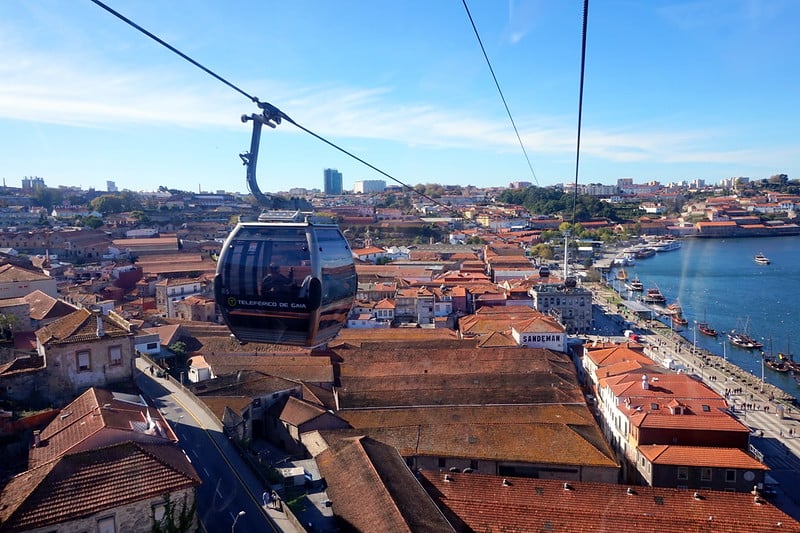
Port Tasting in Vila Nova de Gaia
Spend the afternoon exploring the famous port wine cellars of Gaia. Here are some you can choose from:
- Graham’s Port Lodge, established in 1820, holds approximately 3500 barrels of Port.
- Sandeman, which houses one of Europe’s most extensive bottle collections.
- Taylor’s Port, which offers beautiful gardens and a stunning terrace view alongside its wine cellars.
- Cálem, which has over 150 years of history and offers visitors more than just a tour museum and cellar tour – there are also Fado shows and 5D films.
- Ramos Pinto, founded in 1880, is located in Vila Nova de Gaia’s historic center.
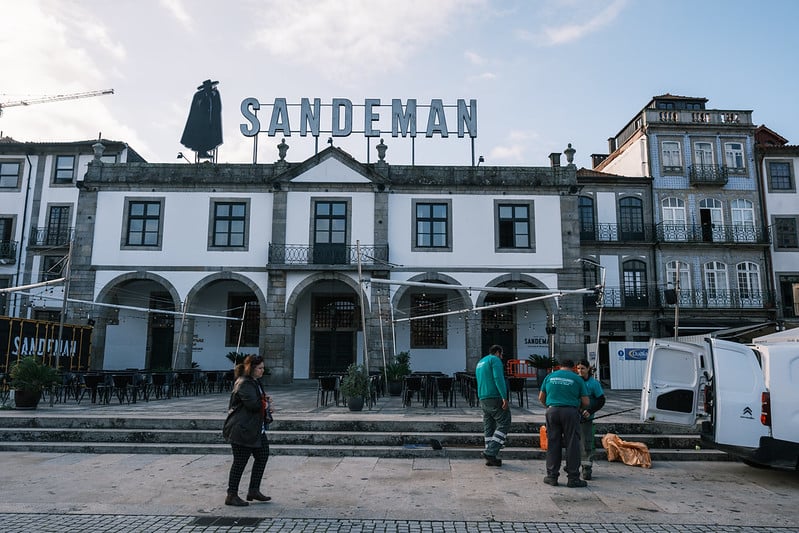
Casa Portuguesa do Pastel de Bacalhau
Location: Av. de Diogo Leite 122, 4400-111 Vila Nova de Gaia, Portugal
Hours: Every day: 10 AM – 10 PM
If you’re in Vila Nova de Gaia, you simply cannot miss out on tasting the delicious Pastel de Bacalhau. This is basically a codfish cake – it sounds simple, but we promise you, it’s absolutely delightful! And you won’t taste a better pastel de bacalhau anywhere else in the world – not to mention the stunning interior decorations that will make you feel like you’ve stepped into another world!
Casa Portuguesa do Pastel de Bacalhau is a relatively recent establishment, having been founded in 2015. However, it has rapidly spread across Portugal, now having ten stores in the country.
Day 4: Museums and Riverside Walks
We’ve decided to book the 4th day in our Porto travel itinerary for museums and riverside walks. If this sounds good to you, put on your most comfortable shoes and let’s go!
Museu de Arte Contemporânea
Location: R. Dom João de Castro 210, 4150-417 Porto, Portugal
Hours: Monday to Friday: 10 AM – 6 PM; Weekend: 10 AM – 7 PM
Tickets: 24 EUR
Begin the day at the Museu de Arte Contemporânea of the Serralves Foundation. This museum is a hub for contemporary art, featuring works signed by both Portuguese and international artists. The surrounding Serralves Park, with its beautifully landscaped gardens and art installations, is perfect for a leisurely stroll.
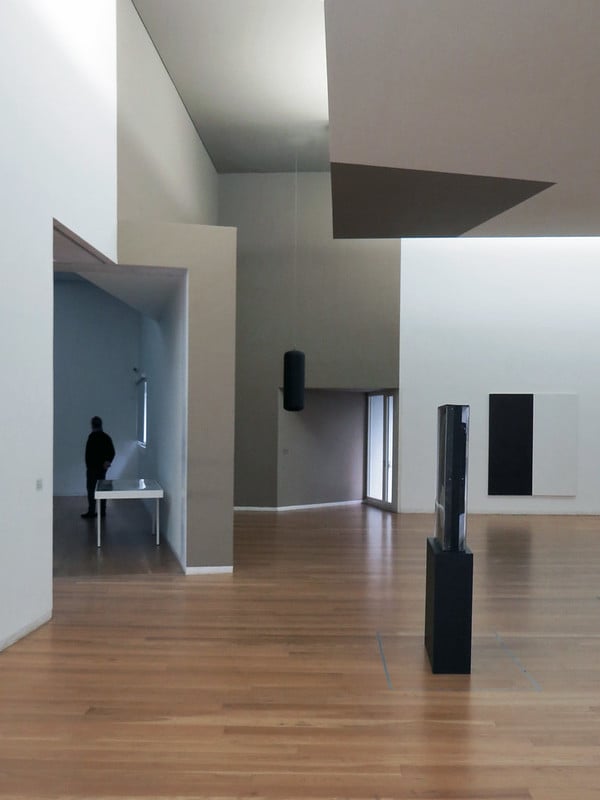
Museu Nacional da Imprensa
Location: Estrada Nacional 108, 206 Porto, Museu da Imprensa 206, Porto, Portugal
If you’re not an artist or art is not something you’re interested in, head to the other side of Porto to check out Museu Nacional da Imprensa – this one is excellent for bookworms, journalists, and anyone interested in Portugal’s history of print media.
The museum houses a collection of printing presses, historical documents, and an extensive archive of newspapers and magazines.
We must mention that this museum is temporarily closed – but it may be open when you come to Porto, so make sure to check their website beforehand.
Museu do Futebol Clube do Porto
Location: Via Futebol Clube do Porto – Estádio do Dragão, 4350-415 Porto, Portugal
Hours: Every day: 10 AM – 7 PM
Tickets: 20 EUR
If you’re neither an artist nor a journalist but are a fan of sports, head straight to Museu de Futebol Clube do Porto!
Located at the Estádio do Dragão, this museum celebrates the rich history of FC Porto, one of Portugal’s top football clubs. Exhibits include trophies, memorabilia, and interactive displays highlighting the club’s achievements.

Palácio da Bolsa
Location: R. de Ferreira Borges, 4050-253 Porto, Portugal
Hours: Every day: 9 AM – 6:30 PM
Tickets: 12 EUR
Whatever museum you’ve chosen from the ones mentioned above, it’s time to head towards Palácio da Bolsa – this one is a must-see for everyone because it’s a feast for the eyes!
Palácio da Bolsa is a 19th-century neoclassical building that once served as Porto’s stock exchange. The palace’s stunning Arab Room was inaugurated in 1880 on the occasion of the tricentenary of Luis de Camoes. Architects, designers, and construction workers spent 18 years building this room!
The palace features other exquisite rooms decorated with fine furniture, paintings, and decorative arts.
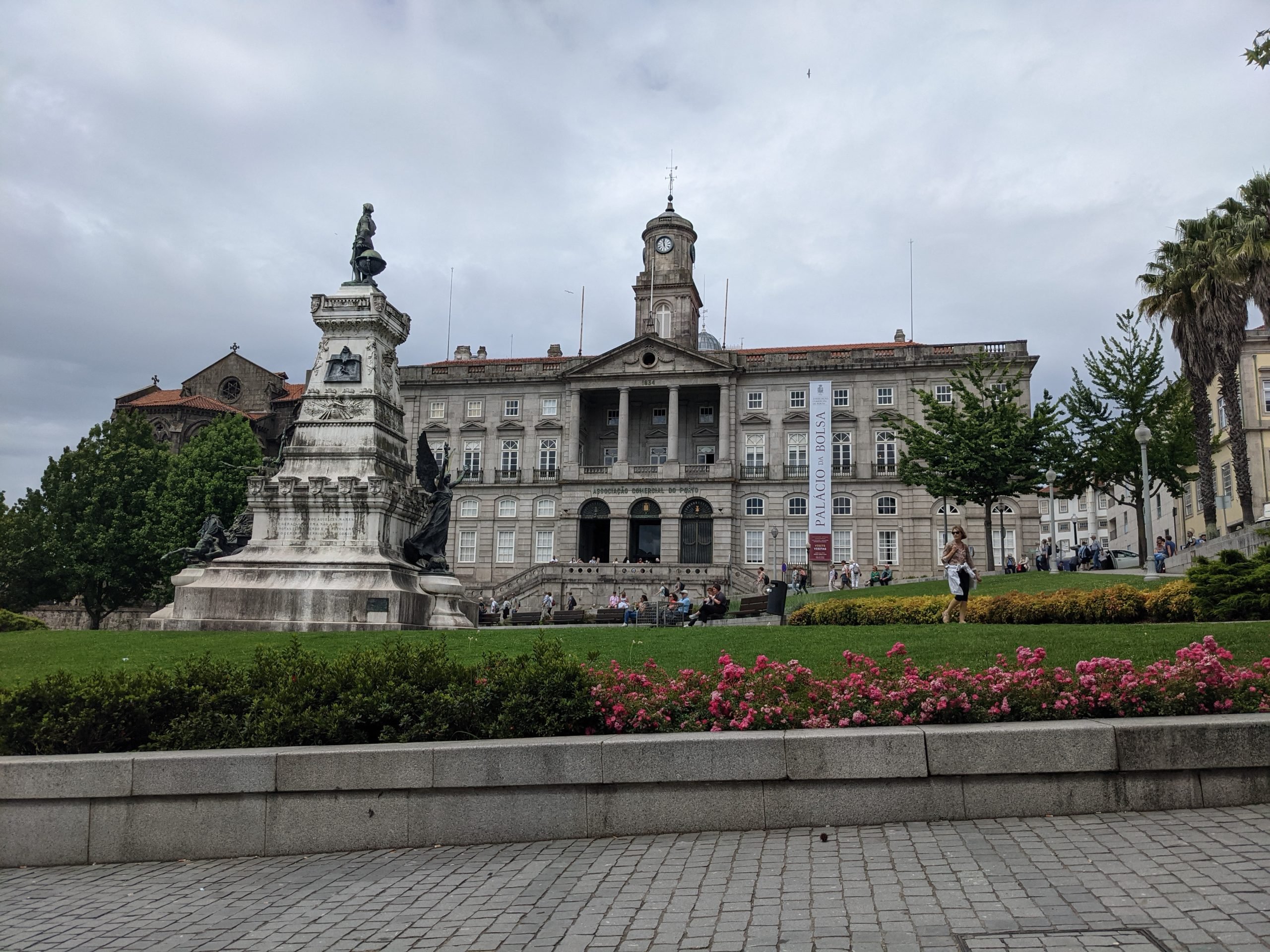
Church of Saint Francis and Casa do Infante
After your visit to Palacio da Bolsa, make sure to stop by the Church of Saint Francis to admire its Gothic elements – the most prominent in Porto! The interior of the church, on the other hand, features Baroque decorative elements.
We also recommend visiting Casa do Infante, one of Porto’s oldest buildings dating back to the 14th century. It was traditionally believed to be the birthplace of Prince Henry the Navigator. Today, it houses a museum that explores Porto’s medieval history and its role in the Age of Discovery.
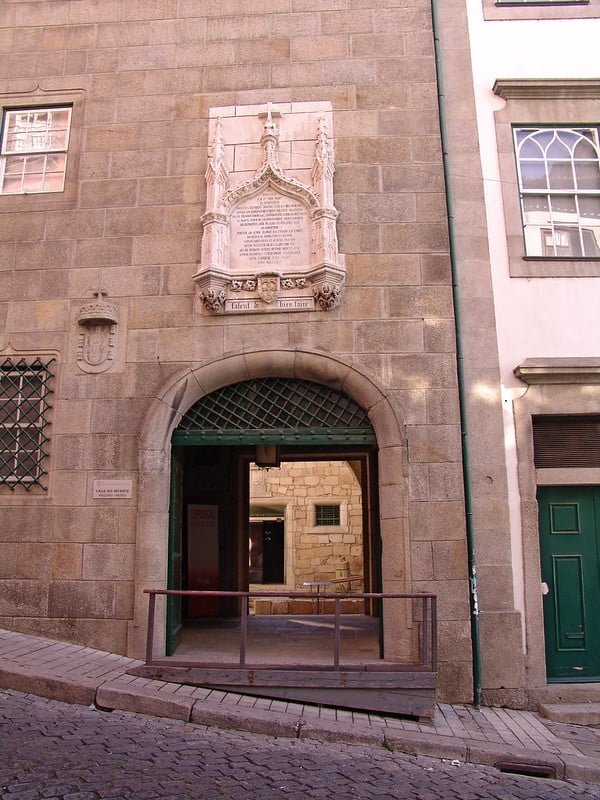
Have a Riverfront Walk and Cross the Ponte de Dom Luís I
End the day with a leisurely walk along the Douro River in the Ribeira District. This historic waterfront area is a UNESCO World Heritage Site. It has narrow, winding streets and colorful buildings. Enjoy the lively atmosphere, with plenty of restaurants and cafes offering outdoor seating with views of the Douro River.
While you’re there, make sure to cross the iconic Ponte de Dom Luís I, a double-deck iron bridge designed by a disciple of Gustave Eiffel – you’re right, the one who designed the Eiffel Tower! The upper deck offers a pedestrian walkway with stunning views of Porto and Gaia.
It’s a perfect way to end your evening, capturing the city’s illuminated skyline and the serene flow of the Douro River!
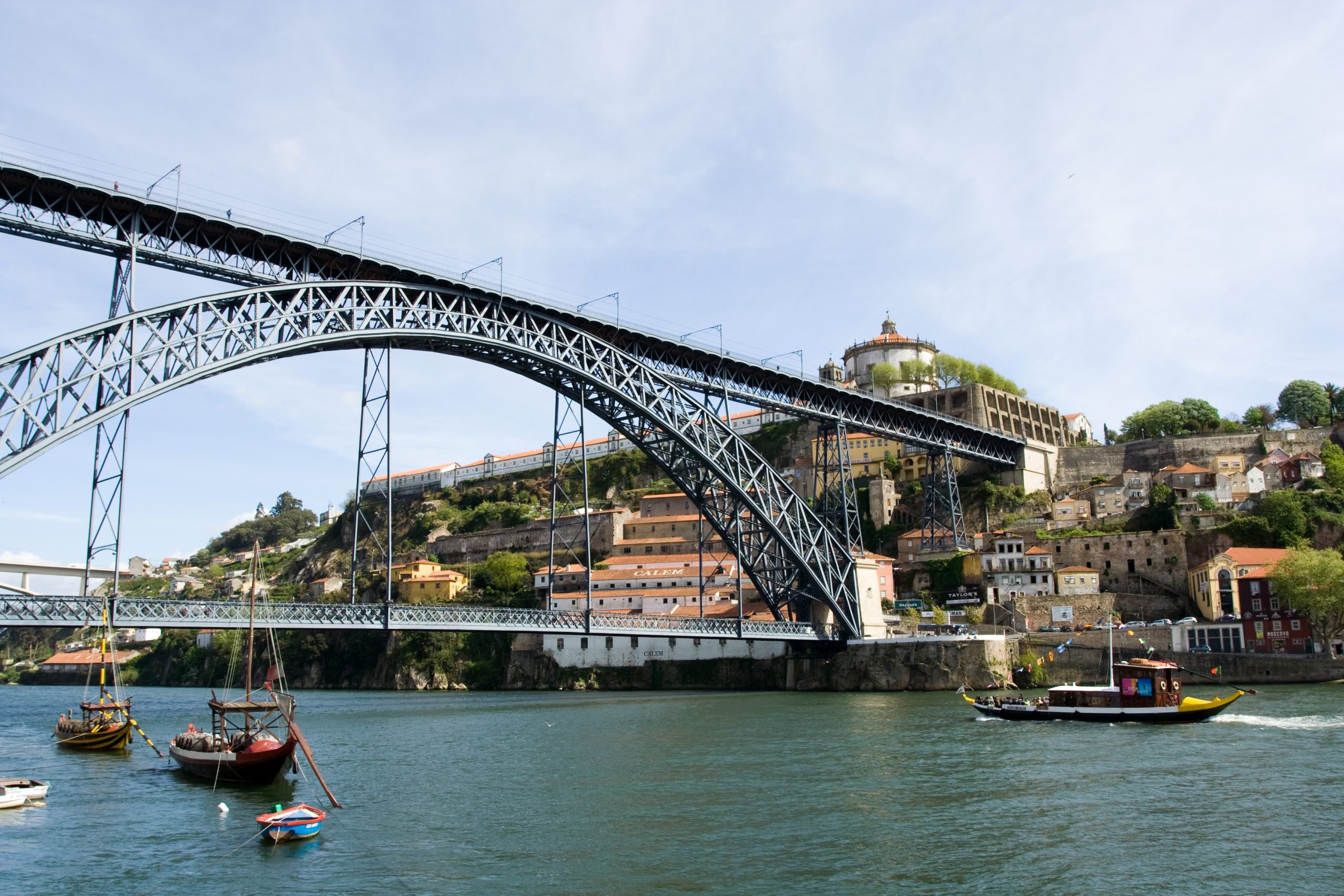
Day 5: A Trip to Douro Valley
The Douro Valley is a UNESCO World Heritage Site known for its terraced vineyards and scenic landscapes – so why not end your trip with it?!
We recommend booking a guided tour (this one, for example). While you can certainly explore the Douro Valley on your own, you’ll enjoy the trip significantly more if you don’t have to worry about anything besides having a good time!
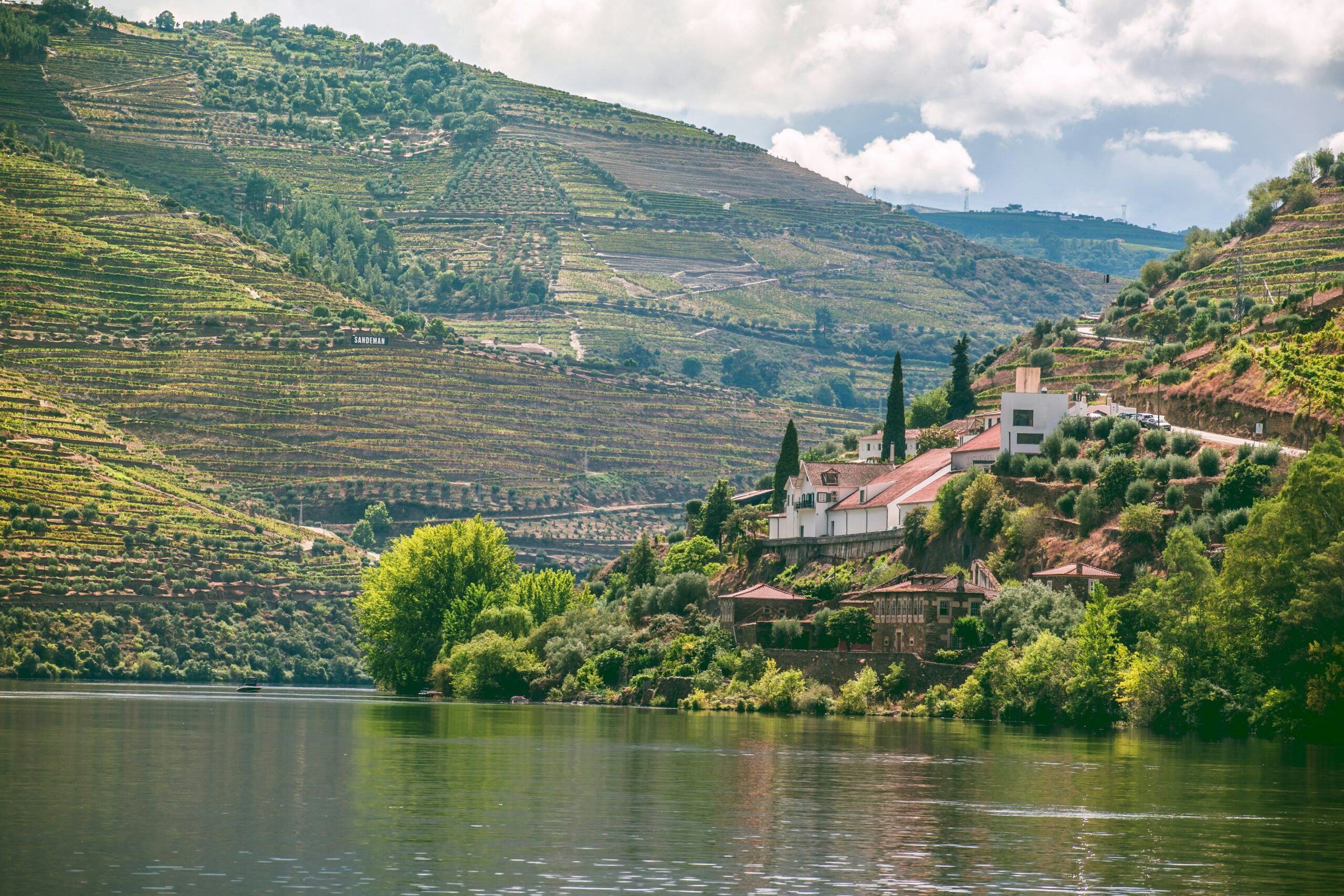
This particular tour, for instance, includes hotel pick-up, guided visits to two wine estates (which include, of course, wine tastings), lunch, and 50 minutes spent on a traditional Rabelo cruise that departs from Pinhão. Make sure to have your camera ready, as the valley’s breathtaking scenery, with rolling hills and the meandering Douro River, ensures breathtaking views you’ll want to revisit through pictures over and over again!
Such tours usually take approximately 10 hours, although this highly depends on traffic. The groups are usually small – up to 30 people – and the tours cost approximately 100 EUR.
Other Things to Do in Porto
If you’re spending more than 5 days in Porto and are looking for other places to visit or simply want to replace some of the attractions we mentioned above – we’ve got you covered! We’ve prepared a list of some extra activities that can make your Porto trip memorable:
- Bank of Materials. Visit the Bank of Materials for a unique cultural experience. It’s a repository of building materials and architectural elements (mostly azulejo tiles) salvaged from demolished or renovated buildings. It’s a fascinating place for those interested in art, architecture, and urban history.
- Have dinner at Voltaria and enjoy your dessert at Cremosi. End your Porto adventure with a memorable dinner. Voltaria offers a cozy atmosphere and a menu featuring traditional Portuguese dishes with a modern twist. Cremosi is known for its delicious gelato and desserts, perfect for satisfying your sweet tooth after a day of exploration.
- Livraria Lello. Take a short walk from Igreja do Carmo and arrive at Livraria Lello, one of the most beautiful and famous bookstores in the world! Its neo-Gothic interior, stunning stained glass ceiling, and ornate wooden staircase are a must-see for book lovers and architecture enthusiasts! However, be aware that the place is usually pretty crowded.
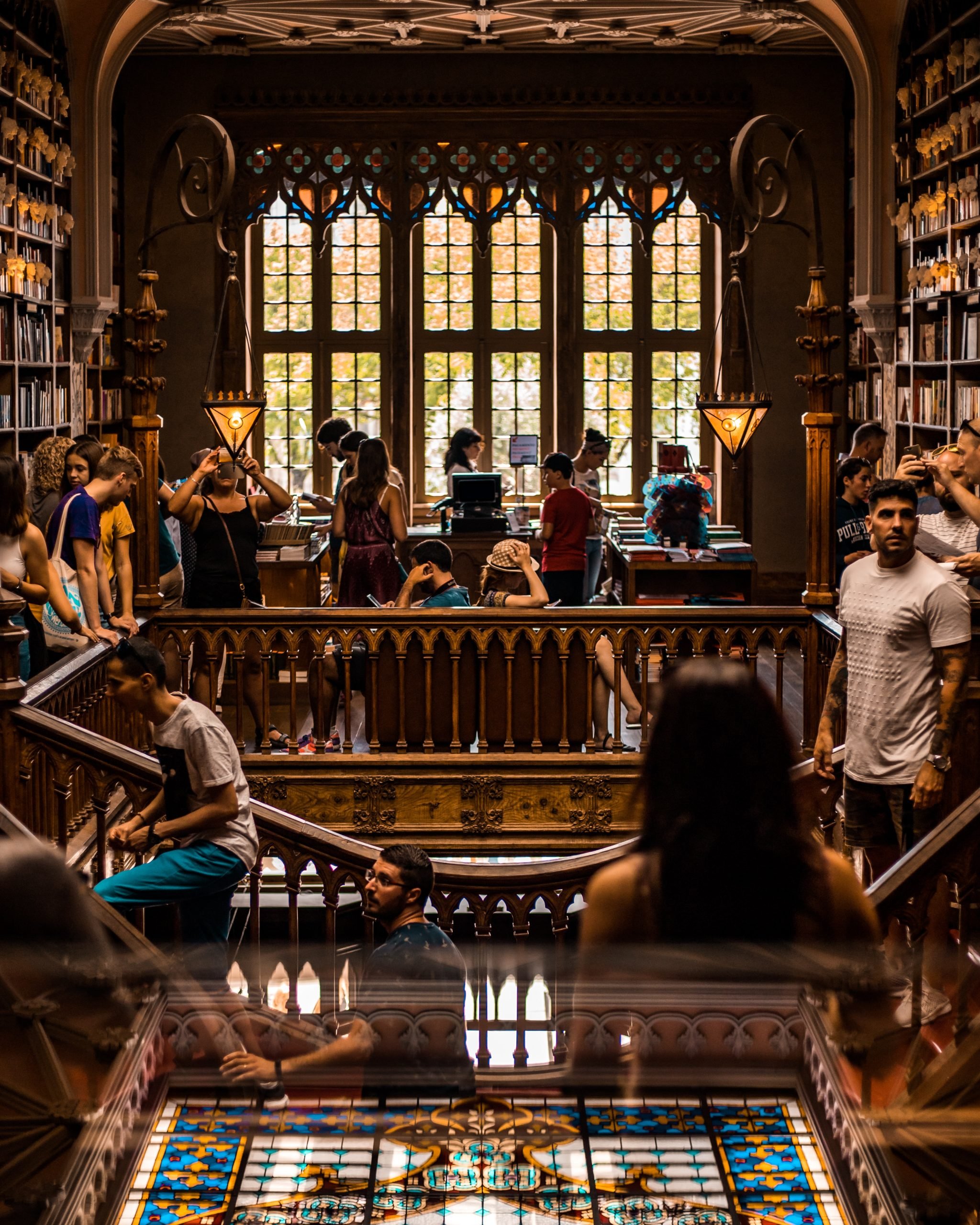
- Majestic Café. Take a break at Majestic Café, an iconic Belle Époque-era café on Rua Santa Catarina. Known for its exquisite Art Nouveau design, this café has been a favorite spot for intellectuals and artists since the 1920s.
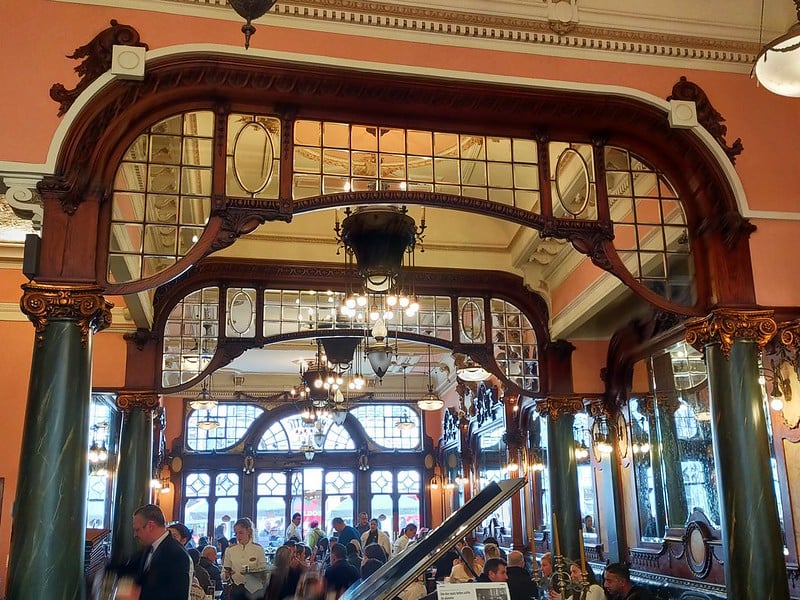
- World of Discoveries. Looking for a fun and educational experience? Visit the World of Discoveries, an interactive museum and theme park that recreates the adventures of Portuguese explorers. It’s a great place for families and those interested in the Age of Discovery.
- Foz do Douro. Spend part of your evening in Foz do Douro, where the Douro River meets the Atlantic Ocean. Enjoy a leisurely walk along the seafront promenade, relax at one of the beachside cafes, or visit the Felgueiras Lighthouse for spectacular ocean views!
- Mercado do Bolhão. Mercado do Bolhão is a traditional market in the heart of Porto. It’s an excellent place to experience local culture, buy fresh produce, and sample regional specialties.
- Passeio das Virtudes. Head to Passeio das Virtudes for another unique viewpoint! It’s a charming garden offering delightful panoramic views of the Douro River and Gaia. It can make for an excellent end of your one-day Porto itinerary, especially if you’re visiting it with your significant other!
Porto Itinerary: Tips
Be it that you spend two days in Porto or a whole week, we’ve prepared some tips on visiting the city. You can thank us later!
- Wear Comfortable Shoes: Porto’s hilly terrain and cobblestone streets can be challenging. You’ll certainly be happy to have worn comfortable shoes!
- Use Public Transportation: Porto’s metro, buses, and trams are efficient and convenient for getting around the city. You can also use Uber, which has highly affordable prices, especially if you’re traveling with friends or family.
- Bring cash: Many restaurants and shops in Portugal accept only cash or local cards, so make sure to have some.
- Purchase a Porto Card. If you have lots of tourist attractions on your Porto itinerary, you can buy a Porto Card, which offers access to public transportation and free entry to various museums and monuments.
- Wear Sunscreen. Don’t forget to wear sunscreen. It’s often windy in Portugal, and you may feel like the sun isn’t strong but it actually is, and you’ll likely end up with a severe sunburn, especially if you spend your whole day walking around the city.
Enjoy your trip to Porto!
Frequently Asked Questions
How Many Days in Porto Are Enough?
We recommend spending at least two days in Porto to be able to see the most sought-after attractions.
Are 7 Days Too Many for Porto?
Seven days are definitely not too many to stay in Porto. There are many tourist attractions you can explore and, besides this, you can book 1-2 days just for sunbathing at the beaches in Vila Nova de Gaia.
Is Porto or Lisbon Better?
Both Porto and Lisbon are worth visiting as they have unique historical and cultural landmarks that can become the highlight of your trip. The ultimate choice depends on your preferences and budget, as well as on the climate – Lisbon is much hotter than Porto in the summer.
Is Porto a Walkable City?
Porto is definitely a walkable city, so pack up some comfortable shoes because you’ll need them!
Is Porto an Expensive City to Visit?
Entry fees, public transportation, and eating out in Porto are quite inexpensive. In fact, Porto is one of western Europe’s least expensive cities.

